Leg Pain
Table of Contents
Introduction
Leg pain is a common and diverse symptom that can arise from a variety of underlying causes, ranging from minor injuries to serious medical conditions. The discomfort may manifest in different forms, such as aching, cramping, tingling, or sharp sensations, and can affect any part of the leg, including the muscles, joints, bones, or nerves.
Understanding the root cause of leg pain is crucial for appropriate diagnosis and effective management. This introduction serves as a gateway to exploring the multifaceted nature of leg pain, delving into its potential origins, associated symptoms, and available treatment options.
Causes of Leg Pain
Leg pain is a symptom that can have a variety of reasons. The majority of leg pain is caused by overuse or wear and tear. Injuries or illnesses affecting the bones, muscles, ligaments, tendons, nerves, or other soft tissues can also cause it. Your lower spine may be the source of some forms of leg pain. Varicose veins, blood clots, and inadequate blood flow can also result in leg pain.
Leg pain can often be caused by the following:
Arthritic
- Juvenile idiopathic arthritis and gout
- Arthritis in the bones
- Psoriatic arthritis
- Pseudo gout
- Inflammatory arthritis
Issues with blood flow
- Deep vein thrombosis (DVT) claudication
- Peripheral arterial disease (PAD)
- Thrombophlebitis
- Slender veins
Conditions of the bones
- Spondylitis with ankylosing
- Cancer of the bones
- The Legg-Calve-Perth’s condition
- Acute Osteochondritis
- Typical Bone disease known as Paget’s
- Virus Infection
An infection of cellulitis
- Osteomyelitis
- Septic arthritis
Injury
- Inflammation of the Achilles tendon
- Rupture of the Achilles tendon
- ACL Injury
- Shattered leg
- Bursitis (imflamation of bursa)
- Severe compartment syndrome resulting from prolonged exertion
- Fractures in the growth plate
- Injury to the hamstrings
- Bursitis in the knee
- Strained muscles
- Inflammation of the patellar tendon
- Patellofemoral pain syndrome
- Sore shins
- Strains
- Cracks from stress
- The tendinitis
- Meniscus tear
Nerve issues
- Disc herniation
- Sensitivity to aesthetics
- Peripheral neuropathy
- Sciatica
- Stenosis of the spine
Conditions of the muscles
- Drugs for dermatomyositis, particularly the statin class of cholesterol-lowering medications
- Polymyositis
- Myositis
Other issues
- Baker cystic disease
- Growing pains
- Cramping in the muscles at night
- Restless leg syndrome
- Insufficient amounts of specific vitamins, like vitamin D
- An excessive or insufficient amount of electrolytes, like calcium and potassium
Some common condition
- Spasm
A common term for a muscle cramp or spasm that causes leg pain is “a charley horse.” Typically, a cramp causes sudden, intense pain when the muscles in the legs contract. Under the skin, the tightening muscles frequently produce an obvious, firm lump. The surrounding area might be a little swollen and red.
2. Strain
A common injury known as muscle strain results from overstretching and tearing the muscle fibers, Larger muscles like the quadriceps, hamstrings, and calves are common places for it to occur.
3. Tendinitis
Inflammation of a tendon is called tendinitis. Thick cords called tendons connect muscles to bones. When they get irritated, it can be challenging.
4. Bursitis
An inflammation of the bursa, which are fluid-filled sacs surrounding the knee joint, results in knee bursitis.
5. Shin fractures or splints
The tibia, or inner edge of the shinbone, hurts when one has shin splints. Overuse can cause the muscles surrounding the shinbone to tear, leading to an injury.
Tiny fractures in the leg bones, especially in the shinbone, are called stress fractures.
6. Electrolyte Disproportion
Minerals called electrolytes, such as calcium, potassium, and sodium, support the proper function of your muscles. When you exercise, you sweat off some of the salt, and if you lose too much, your legs may cramp or become numb or weak. Additionally, it may occur during certain medical treatments, such as chemotherapy. Electrolyte-rich sports drinks or water combined with foods high in those minerals can be beneficial. If you have cramps frequently consult a physician.
7. Atherosclerosis
The hardening and narrowing of the arteries brought on by an accumulation of fat and cholesterol is known as atherosclerosis. The blood vessels that distribute oxygen-rich blood throughout your body are called arteries. A blockage causes your body’s blood flow to be reduced to different parts. Leg pain may arise from inadequate oxygen delivery to the leg tissues, especially in the calves.
When a blood clot forms in a vein that is deep within the body, it is known as deep vein thrombosis (DVT). A solid mass of blood is known as a blood clot. After extended periods of bed rest, DVTs usually develop in the lower leg, resulting in pain and swelling from cramps.
9. Arthritis
Inflammation of the joints is known as arthritis. In the affected area, the condition may result in redness, pain, and swelling. It frequently affects the hip and knee joints.
10. Gout
An excess of uric acid can accumulate in the body and cause gout, a type of arthritis. Usually, it results in lower leg and foot pain, swelling, and redness.
11. Varicose vein
Varicose veins may be the cause of any aching, heavy, or burning sensation you’ve been feeling in your legs. These are enlarged veins that frequently start younger and develop as people age.
It’s crucial to remember that varicose veins are mostly a cosmetic issue for most people. However, for some people, varicose veins can result in more serious health problems, like large ulcers or blood clots that could end their lives.
Varicose veins typically have a blue or dark purple hue and have a twisted or protruding appearance.
Symptoms of varicose vein
- Varicose vein symptoms include:
- Lower leg edema and cramping in the muscles
- increased soreness following extended periods of sitting or standing
- Itching, soreness, or warmth near one or more veins on your body
- Ulcer on your skin
Self-care of leg pain in varicose vein
- To prevent the worsening of varicose veins, self-care options include maintaining hygiene.
- Working Out
- reducing the amount of canned soups and veggies, snack meats, and chips that you eat
- Getting in shape
- dressing more loosely
- Putting your legs up
- Refraining from prolonged standing or sitting
- Buying compression stockings from your neighborhood drugstore or medical supply company is frequently the first course of action your healthcare provider will recommend before attempting an alternative form of treatment. When worn during the day, compression stockings enhance blood flow to the legs and lessen soreness and swelling.
Operative measures of varicose vein
Sclerotherapy
During this process, a medical practitioner injects a scar-and vein-closing solution into varicose veins. Needles are not necessary when using laser energy for this.
Minimally invasive procedure with catheter assistance
This procedure involves inserting a long, thin tube into the vein, heating the tip, and then using radiofrequency ablation or laser energy. Larger veins are destroyed by this, as they collapse and close.
Stripping veins
Through tiny leg incisions, a small section of vein is removed during this procedure. Because larger volumes of blood are handled by veins deeper in the leg, removing the vein won’t stop blood from flowing in the leg.
Portable phlebotomy
This is a less invasive procedure than vein stripping, and it is performed in a physician’s office. Small skin pricks are used to remove smaller varicose veins of the legs. The leg is numbed only where it is being pricked. For more extensive vein removal, it is also done in the operating room under sedation or another form of anesthesia.
Endoscopic vein surgery
When leg ulcers are advanced, this surgery is typically performed.
For optimal effects, one or more procedures can occasionally be combined. Your medical team will be pleased to go over your options with you and decide on the best course of action to treat your varicose veins.
9. Infection of bone
Pain, redness, or edema may be experienced in the affected area of the leg due to an infection in the bone or tissues.
10. Diabetes
Numbness, pain, or tingling in the leg may be the result of nerve damage. Due to diabetes, it frequently affects the feet and lower limbs.
11. Slipped (herniated) disc (prolapsed intervertebral disc)
When one of the rubbery discs between the vertebrates slips out of place, it results in a slipped (herniated) disc. Spinal nerves may be compressed by the disc. This could set off a pain that radiates down your arms and legs from your spine.
Common symptoms of leg pain related to it
Weakness
Compression of a lumbar or sacral spinal nerve frequently results in leg weakness. It might be challenging to raise the affected leg’s foot off the ground (foot drop) if there is a sensation of heaviness
Altered sensation A leg that is affected by a nerve injury may experience tingling, pins and needles, or other nerve-related sensations.
Foot ache An ache or burning sensation may radiate from the leg pain into one or more foot regions. There may also be numbness or weakness in the feet. pain in the posture.
Certain postures or activities
Such as standing for extended periods, walking, climbing stairs, or getting up from a seated position, may exacerbate leg pain and numbness
12. Osgood-Schlatter disease
When the tendon that joins the kneecap to the shinbone becomes strained, Osgood-Schlatter disease develops. It tugs on the tibia’s cartilage at the point where it joins the bone. It results in tenderness and swelling around the knee, as well as the formation of a painful lump beneath the knee. It usually affects teenagers going through puberty who are going through growth spurts.
13. Legg-Calve-Perthes
The cause of Legg-Calve-Perthes disease is a disruption in the blood flow to the hip joint ball. The bone is severely damaged and may become permanently deformed due to a lack of blood supply. Pain is frequently the result of these anomalies, particularly in the area of the hip, thigh, or knee. This mostly happens in adolescence.
14. Slipped capital femoral epiphysis
Hip pain is caused by a separation of the hip joint’s ball from the thighbone, which is known as slipped capital femoral epiphysis. Only children are affected, especially those who are overweight.
15. Benign, or non-cancerous, tumors
Benign, or non-cancerous, tumors can also form in the shinbone or thighbone.
16. Ischaemic leg pain
When there is insufficient blood flow to the leg due to blockage or severe narrowing of the leg arteries, ischemic leg pain arises. Atherosclerosis, or the hardening of the arteries, is the reason for the blockage or narrowing and is brought on by aging, smoking, or diabetes.
17. Intermittent claudication
The initial stage of ischaemic leg pain is characterized by pain in the calf, thigh, or buttock muscles during walking. Walking increases blood flow to the muscles, which helps them absorb more oxygen and flush out toxins. Toxins accumulate in the muscles, causing pain and weakness, if the arteries are unhealthy and the muscles do not receive the additional blood they need.
This happens at a considerable distance, such as half a mile, in the early stages of the illness. If the artery narrowing gets worse, one can walk less distance—for example, 100 yards—before experiencing pain. Some patients eventually reach a point where their leg pain stops them from moving more than a few yards. Sleeping
18. Pain during the night or rest
Even at rest, severely constricted or blocked arteries are unable to pump enough blood to the legs. First to be impacted is the body part that is farthest from the heart, such as the feet and toes. The feet may only hurt at first during the night when the legs are positioned horizontally in bed, depriving the feet of gravity’s assistance in supplying blood.
For temporary pain relief, some people find that hanging their legs out of bed works well. Eventually, the pain in the feet becomes constant throughout the day, making it extremely difficult to sleep.
19. Ulceration and gangrene
This results from very serious arterial disease, when so small amount of blood reaches the lower leg and feet that ulcers and gangrene occur. This results from very serious arterial disease, when so small amount of blood reaches the lower leg and feet that ulcers and gangrene occur.
More blood than usual is needed for any wound to heal. If that added extra blood is not coming, the wound never heals and dies back to position, resulting in ulceration and dry, black-colored gangrene. This requires urgent operation if the limb and life are to be saved.
20. Restless legs syndrome
Also known as Willis-Ekbom disease. a kind of sleep disorder characterized by an intense, often overwhelming urge to move your legs (and even your arms or body). Other limb-related sensations like pulling, creeping, tugging, throbbing, itching, aching, burning, or crawling can be its outward manifestation. These are usually the result of prolonged periods of immobility, like driving watching a movie, or lying in bed.
RLS often appears in the evening, which makes falling asleep difficult. The percentage of Americans with restless legs syndrome is approximately 10%. While RLS can afflict anyone, middle-aged adults are more likely to have severe symptoms, and women are more likely than men to develop the condition. If symptoms are mild or non-existent, doctors may not diagnose RLS.
21. Being pregnant
Leg cramps are a common symptom of pregnancy, though some medical professionals distinguish them from leg cramps that happen at night. It’s unclear to researchers whether pregnancy-related reduced blood flow in the veins or pregnancy-induced leg cramps.
Leg cramps during pregnancy can be lessened by taking magnesium supplements, but you should speak with your doctor before beginning any new supplement regimen.
When should I visit the Doctor?
- If your legs hurt or are sore, get medical help right away and:
- The leg has increased in size.
- It appears distorted, is difficult to operate, unusually cold or pale, numb and feeble, red and warm
- You have trouble breathing and both of your legs are swollen.
- The hurt is becoming more severe.
- If you experience any severe symptoms that don’t go away, such as fever, calf pain after a long trip, or any other infection-related symptoms, see your doctor right away.
Diagnosis
It’s critical to visit a doctor for a diagnosis and treatment if your leg pain is severe or interferes with your day-to-day activities. In addition to asking you about your signs and symptoms, your doctor will examine you physically by all measure
Along with other tests and investigations, your doctor might prescribe imaging and the following:
X-ray Images of dense structures, like bones, are produced by this test.
Magnetic Resonance Imaging (MRI): This test produces finely detailed images of specific body parts by using radio waves and a magnetic field. When precise images of the soft tissues and ligaments surrounding the back or leg joints are required, these are frequently required.
Treatment of Leg Pain
Treatment of Leg Pain at Home
Heat and cold
You can increase your function and reduce the pain regard with sciatica pain by applying heat or ice packs to your body
Utilize ice for the first 7 days. Apply cold packs to your lower back to lose sciatic nerve swelling. Take care not to get yourself a frostbite on your body. Icepacks may be wrapped in a cloth towel or cotton to prevent skin contact. Give them a minimum of 15 to 20 minutes of rest in between each of the 15 to 20 minutes of letting them in space. Try to change between on and off for a duration of 75 to 100 minutes. After that, pause to get your feelings.
An Ice application is an extra method of applying cold to a sore body spot. Cold the water in a paper cup, then rip off the upper portion of the bowl. Work the ice into the lower back in a round motion. To avoid frostbite, cover an area with a diameter of roughly 6 inches and keep the cup moving. Steer clear of the spine’s bony region. Now Wait at least an hour between massages and limit your massage time to no more than 10 minutes
In midtime of ice applications, you may also try many light stretches, but it’s best to wait for the area to warm up for about 30 minutes. Applying 3 to 5 times a day could help decrease some of the discomfort.
Heat therapy can be used after the first week, once some healing has taken place and the pain is decreasing. (See a doctor if, after a week, the pain has not lessened at all.) Heat-based treatments will increase local blood flow and speed up the healing process. Heat also aids in muscle relaxation, allowing for light stretching that may lessen pain.
You can use a heated bottle or pad, have a warm bath, or wrap both in a towel. If you’re using a heating pad or water bottle, apply it to your lower back. Follow these precautions when applying heat treatment to prevent burns:
If you are utilizing a warm water bottle or heating pad, place a piece of cloth barrier between your body and the heat source.
Verify that the method of utilization is warm, not hot; if it feels excessively warm, it is.
Warm the area for not less than 15 minutes and a maximum of 2 hours. Your pain threshold to know how long it takes.
It’s imp to avoid dozing off when utilizing a heating pad.
Put on some ice
At least four times a day, apply ice to the leg’s affected area. In the initial few days following the onset of pain, you can repeat this even more frequently. The ice can be applied for up to fifteen minutes at a time.
In a warm bath, stretch your body.
After a warm bath, give your muscles a gentle stretch. When sitting or standing, try pointing and straightening your toes if you experience pain in the lower leg. Try bending over and touching your toes if you are experiencing pain in the upper portion of your leg.
You can stand up or sit on the ground to perform this. Take your time with each stretch and hold each pose for five seconds.
Avoiding excessive bed rest
This can exacerbate the pain,
Avoiding sitting as much as possible
This can aggravate the sciatic nerve,
Care while sleeping
When sleeping on one’s side, position a small, firm pillow between the knees; when lying on one’s back, position a small, firm pillow beneath the knees;
Deep tissue massage
Treatment for mild leg pain at home often results in improvement. To reduce slight discomfort and edema:
Avoid using your leg as much as you can. After that, start with light use and stretching as your doctor has advised.
Every time you sit or lie down, raise your leg.
Apply a bag of frozen peas or an ice pack to the area that hurts for fifteen to twenty minutes, three times a day.
Consider using over-the-counter pain relievers. Skincare products like gels, patches, and creams may be beneficial. Products containing menthol, lidocaine, or diclofenac sodium (Voltaren Arthritis Pain) are a few examples. Additionally, you may attempt oral painkillers like ibuprofen (Advil, Motrin IB, etc.) and acetaminophen (Tylenol, etc.). or
If your leg pain is caused by cramps or a small injury, you can typically treat it at home. If you think that your leg pain is due to overuse, fatigue, or muscle cramps, try these at-home remedies:
As much as you can, elevate your leg with pillows and rest it.
As your leg heals, take an over-the-counter pain reliever, such as ibuprofen or aspirin, to help reduce discomfort.
Put on supportive stockings or compression socks.
Keeping your legs from hurting
Stretching your muscles before and after exercise is a good way to avoid developing leg pain from physical activity. Eating foods high in potassium, like chicken and bananas, can also help prevent injuries to the tendons and muscles in the legs.
Treatment of ischemic lower extremity pain
Since this is the initial stage of the illness, receiving the right care now can stop it from progressing to later stages. If you take the following actions, you can heal yourself:
Quit smoking
This is crucial since continuing to smoke will not improve your health.
Everyday walking
Small arteries are stimulated to open and bypass the constricted arteries by exercise. Decide on a route that you will enjoy walking each day.
It is not good to go shopping, mow the lawn, or take the dog for a walk. The sole purpose of taking this walk is to strengthen the muscles. Proceed at a speed that you are aware will cause discomfort.
After noting the location of the pain, proceed ten to twenty yards before stopping and allowing the pain to completely subside. Then continue walking. Increase the distance progressively over the weeks and months before stopping. We do not want to strain your heart, so do not overdo the exercise; instead, it should be mild with a focus on the gentle.
Aspirin
To thin the blood, take 75–150 mg of aspirin daily. Those who are unable to take aspirin have other options.
Reduce your weight
Clutching less weight can treat claudication on its own because carrying extra weight makes it harder for your muscles to move.
Doctors opinion
To make sure these are appropriate, your doctor will monitor your blood pressure, cholesterol, and other medical conditions.
Angioplasty
Should your claudication not get better or prevent you from exercising, we might go ahead and schedule an angiography, which is a specialized x-ray. A needle is used to inject dye into an artery, usually in the groin, while under local anesthesia. When the dye is transported through the leg arteries by the blood, X-rays are taken, which reveal the locations of blocked or narrowed arteries. An angioplasty, which involves inserting a balloon into the artery and inflating it where the artery is narrowed, can sometimes be used to stretch the narrowed artery. The symptoms of intermittent claudication can be relieved and the leg’s blood supply improved by stretching the constricted artery.
Gangrene, ulceration, night pain, and rest pain
Exercise usually won’t help once arterial disease has advanced to the point where these symptoms appear, and if the leg is to be saved, one of two procedures must be performed: an angioplasty or a bypass. An arterial bypass procedure bypasses a blockage in the leg arteries using either your vein or a segment of synthetic graft material. This is a significant arterial procedure. Leg amputation may be necessary if the limb is severely affected by ulceration or gangrene, or if the angiogram indicates that a bypass operation is not feasible.
Surgery for an arterial bypass
To improve a limb’s blood supply and bypass clogged arteries, arterial bypass surgery is carried out. Surgery on the bypass is done on those patients.
During surgery, a normal artery is divided above and below the clogged artery, and the blood is then redirected around the blockage using a piece of vein or artificial graft material. It is advised that you have a thorough discussion with your surgeon regarding this complex surgery
Physiotherapy treatment for Leg Pain
Stretches for the Hamstrings
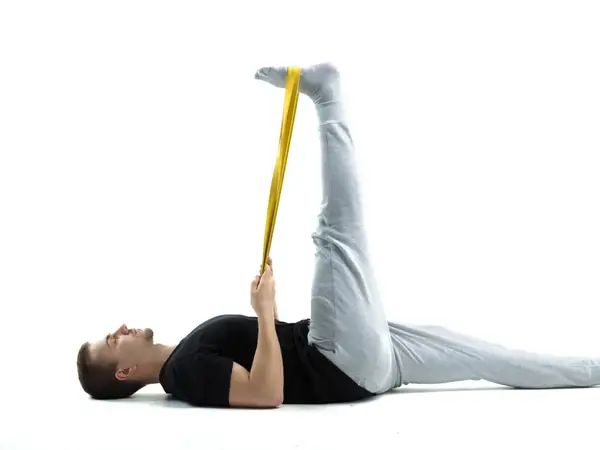
The hamstring muscles are located in the rear of the upper leg. If your legs hurt after a leg day at the gym or after a half marathon, bend forward from your waist and sit on the floor. Make every effort to bend without bending your legs. Hold the position for twenty seconds. Release and repeat three times.
As an alternative, you can stand and stretch your hamstrings like this: As you stand, place your right foot over your left. Gradually bend forward until your knees and forehead are in alignment. Maintain this stance with your legs extended. Hold it for about 20 seconds. Once you are standing straight up, cross your left foot over your right foot and repeat the movement.
Calf Stretches
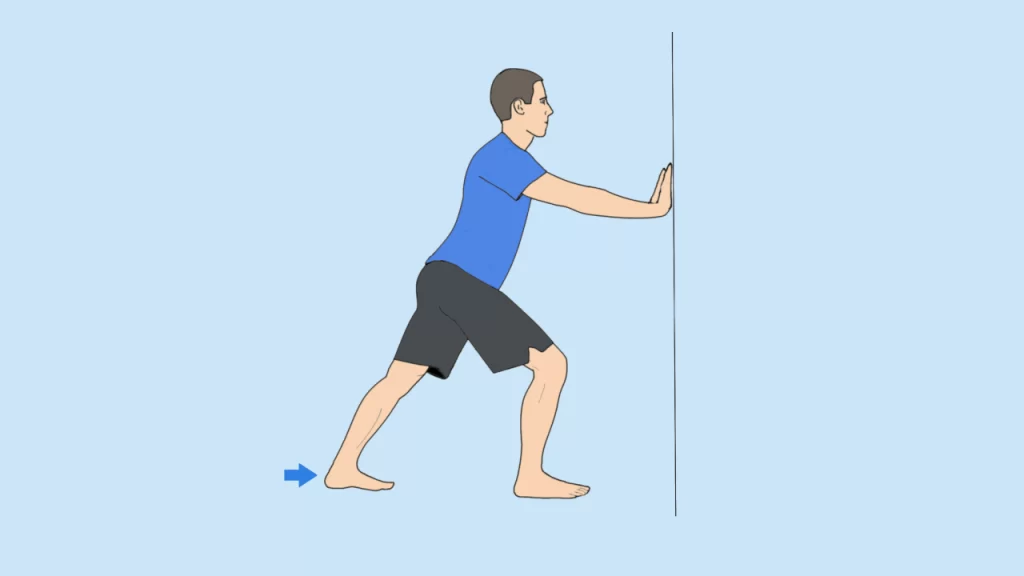
Lean away from a wall by an arm’s length. Place both hands shoulder-width apart on the wall, then push against the wall while stepping back with one leg. For twenty to thirty seconds, hold the position. Repeat with the other leg after releasing it.
Stretches for the Hip Flexors
Sit with your back straight on the floor. In front of you, bring your foot bottoms together. As you slowly lower your knees to the floor, bring your heels closer to you. Keep the posture for half a minute.
As an alternative, you can stretch your hip muscles by performing lunges or mountain climbers.
Treatment of sciatica at home
Sitting and stretching your glutes
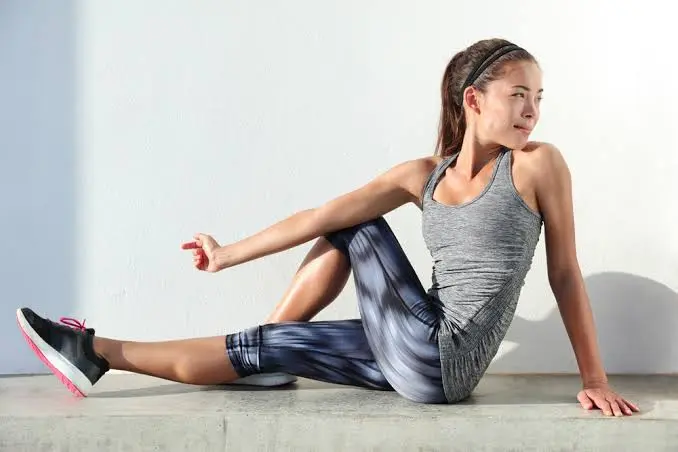
Stretch your leg out in front of yourself while seated on the ground floor.
Your upper body should make contact with your thigh as you bend forward.
Hold for 15 to 30 seconds. The glutes and lower back are opened up by this.
Proceed to the other side.
Stretching the spine while sitting
Sciatica is the result of vertebral compression in the spine. This stretch helps release pressure on the sciatic nerve by creating space in the spine. Sit on the ground with your legs extended straight out and your feet flexed upside down. Bend your right knee while keeping your foot flat on the floor outside of your opponent’s knee.
Stretching your glutes while seated
Sitting on the ground floor, do an extension of your legs in front of yourself. As you bend forward of yourself, your upper body may come in touch with your thigh. For 15 to 30 seconds, pause. Continue on the opposite side.
Sitting spinal stretch
Compression of the spine’s vertebrae causes sciatica pain. By taking space in the spine, this stretch helps in relieving pressure on the sciatic nerve. With your feet flexed up on the side and your legs straightened out, take a seat on the ground floor. Put your left elbow joint outside of your right knee joint to help you turn your body to the right side. Hold for 30 seconds, then alternate sides and do it 3 more times.
Simple seated stretches
Take a seat in a chair and place your sore leg over the knee of the other leg to begin this stretch. Next, carry out these steps: Maintain this position for thirty seconds, then switch to the other leg to complete the exercise. Strive to maintain a straight back as you bend in front of your chest. If it doesn’t hurt, try bending over a little bit more. Stop if you are in pain. Maintain this position for thirty seconds, then switch to the other leg to complete the exercise.
Stretch in Figure 4
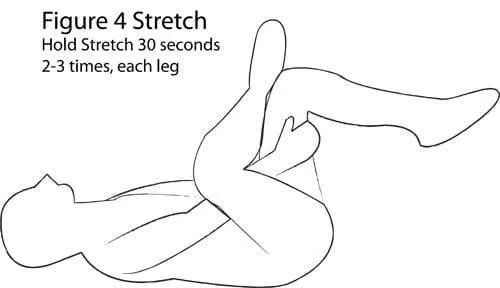
Stretching in a figure-four manner helps open up the hips. This stretch has many variations, but the following is how you can do it to relieve sciatic nerve pain:
Bend both of your knees while lying flat on your back.
Cross your right foot over your left thigh as you raise your legs towards your torso. After a short while of maintaining the position, repetition on the other side occurs. It’s imperative to refrain from pushing this stretch. Instead, allow gravity to pull your legs in closer to your body naturally to get a deeper stretch.
Knee to the opposing shoulder
The sciatic nerve may be compressed by inflamed gluteal and piriformis muscles; this simple stretch helps relieve that pressure. Lying on your back, flex your feet upward and extend your legs. Cover your right knee joint with your hands and bend it. Draw your right leg across your body in the direction of your left shoulder. Hold it for thirty seconds. Always keep in mind that you should only pull your knee as far as it feels comfortable. Instead of hurting, your muscles should stretch to release tension.
Push your knee joint to keep your leg returning to its original position. Change legs once you’ve finished three repetitions.
Standing hamstring stretch
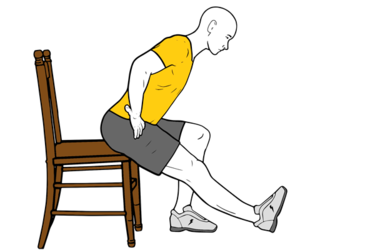
Sciatica-related hamstring muscle tightness in the body and pain might decrease with this stretch.
On an inclined surface, put your right foot at or below the side of the hip level. This could be a step on a stair, a table, or a chair. To know that the leg and toes are straightened, flex your foot on the body. Stay your knee slightly turned if it tends to be hyperextended.
Your body should be slightly bent front side towards your foot body. The stretch gets deeper the farther away you travel apart. Prevent pushing yourself after the point of your pain in body limit is noted.
Instead of lifting your upside leg higher, let go of its hip. To assist with lowering your hips, loop a long exercise tight band or yoga strapping under your left foot and over your right thigh. Hold for 32 seconds
After completing 3 repetitions, change legs.
Standing piriformis stretch
This is another stretching exercise that you can do while standing to relieve sciatica pain. You can do this on your own if you can manage it, but it can be difficult to balance. Alternatively, you could place your feet about 24 inches apart while standing with your back to a wall.
Place the injured leg over the other leg’s knee as you stand up. Try forming the number four with your standing leg bent while your hips are lowered to the floor at a 45-degree angle.
You can swing your arms and bend your waist while keeping your back straight. For a duration of thirty to sixty seconds, maintain this stance.
Continue with the opposite leg.
Scissor hamstring stretch
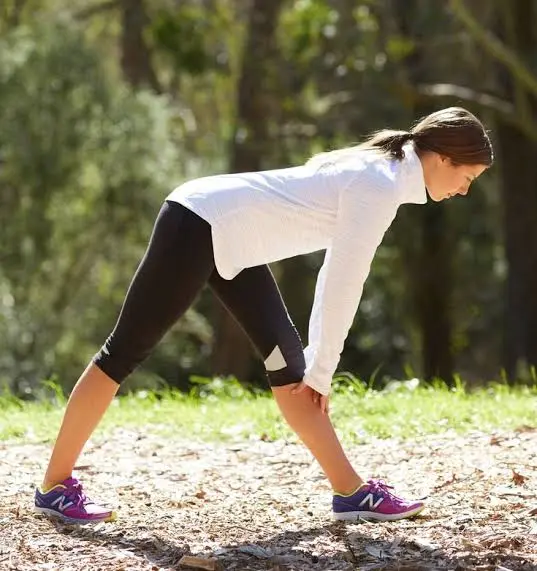
You can perform this additional stretching exercise while standing to help with sciatica pain. If you can manage it, you can do this on your own, but it can be challenging to balance. As an alternative, you could stand with your back to a wall and space your feet about 24 inches apart.
As you stand up, place the injured leg over the knee of the other leg. With your hips lowered to the floor at a 45-degree angle and your standing leg bent, try making the number four.
You can maintain a straight back while bending your waist and swinging your arms. Stay in your body in this position for 30 to 60 seconds.
Proceed with the other leg.
Hamstring stretch
The ischium, which is a part of the pelvic girdle along with the pubis and ilium, is where the ischial tuberosity, also referred to as the sit or sit bones, starts. The sacrotuberous ligament joins the hamstring muscles of the body to the ischial tuberosity. Sciatica symptoms can be mistaken for hamstring strains. This stretch will help release tension in your hamstring muscles, which will protect the sciatic nerve. After your left leg by hardly 3 feet, place your right side foot.
Make sure your right hip does not protrude further than your left by pulling your hips forward and pushing your shoulders back. Using a mirror to assess this could be helpful. Pull your hips forward and push your shoulders back so that your right hip doesn’t jut out farther than your left. It might be useful to evaluate this using a mirror.
Position your hands on your hips. Make use of a chair or table if you require assistance with balance. To slightly push your trunk over your front leg, slightly bend your waist while keeping your back straight. Keep your front leg’s body weight supported. Stretch the other leg after sustaining this position for five to ten seconds. extending the legs three to five times each.
Forward pigeon pose
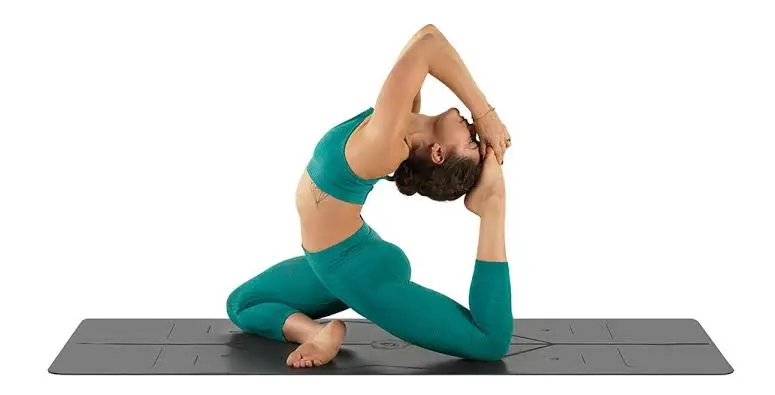
Kneel on the ground on all fours.
Raise your right leg and place it on the ground in front of your body. Your lower leg should be on the ground with its transverse to your body. Your right foot should be in front of your left knee while your right side of the knee remains on the right side. Stretch your left leg fully out in front of you on the floor, with the toes pointing back and the foot upside down.
Transfer your body weight from your arms to your legs gradually to make it appear as though your legs are supporting your weight. Sit up straight and place your hands on either side of your leg. Take a deep breath in. Bend your upper body forward over your front leg as you exhale. Use your arms to help support your body weight as much as possible. Proceed to the other side.
Horizontal Straight-Leg Raise with Chair
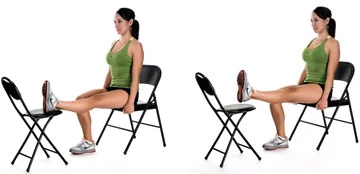
Use a chair across from a sofa or two chairs. Stretch your leg out so it rests on the other chair while you’re seated. Lift the leg slowly—no more than twelve inches—while maintaining its straight posture. Get back to the 1st position then hold for 10 seconds. 10 times for each leg, repeat.
Straight-Leg Lift Exercise
Laying on your back, bend your left leg upward to begin. Maintain a straight-out, fully extended right leg. Raise your right leg slowly to a 45-degree angle while maintaining a straight leg lock. After five seconds of holding, gradually return to the flat, resting position. Since the first 90 degrees is the most difficult range of motion, it is not necessary to take the leg straight up to that position.
Knee Full Extension Exercise
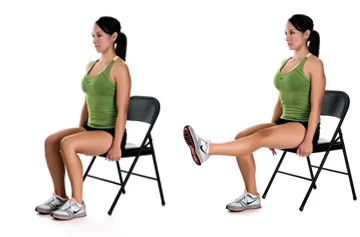
To begin, position yourself in a chair high enough to allow your knee to bend to a 90-degree angle. Raise the leg gradually until it is horizontal. Hold it for five seconds, then release it gradually back to the ground. Continue with the other leg. Try to complete twenty repetitions.
Unweighted Flexion
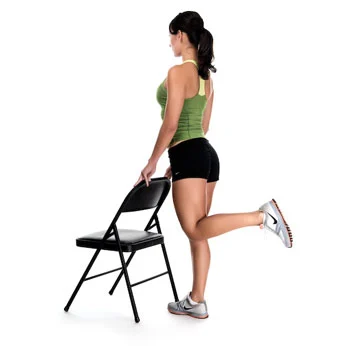
Utilizing the chair’s back as support, take a position behind it. Raise your left leg to a roughly 90-degree angle, hold it there for ten seconds, and then return to the starting posture. Perform ten repetitions on each leg after switching them.
Leg Abduction
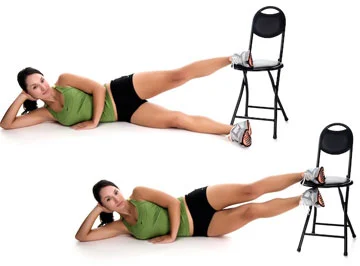
As demonstrated, place one foot on top of the chair and one below it, resting on the floor. Lift the extended leg and place it up against the chair’s bottom. Ten seconds of holding, then change the leg.
Unweighted Exercises
Start by raising both legs while lying on your back. For balance, extend both of your arms out to your sides. With your feet in the air, start a cycling motion. Make an effort to extend the range of motion in the knee joint area so that each leg can flex from nearly straight and extended to 90 degrees bent.
Double Knee To Chest
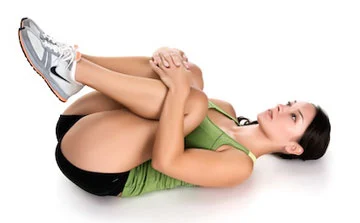
Laying flat on your back, extend your legs. Raise both knees to the same level, and place your hands on the top of your shin just below the knee joint. Your hands can also be placed on the backs of your thighs. Return to your starting position after bringing your knees slowly up to your chest and holding them there for ten seconds.
Raising Calf
With your legs together and your feet flat on the ground, raise yourself onto your toes. Repeat five to ten times.
Rolls of the Ankles
As you step forward, shift the majority of your weight to the foot that is in front of you. When your toe tips make contact with the floor, roll your back foot over. Take 30 seconds to complete this. Five times each for each leg, repeat.
Wall side stretch
Place one foot in front of the other and place your hands against the wall in front of you. Maintaining your front foot flat on the ground, extend your rear leg straight out, lifting your heel so that only your toes touch the floor. After 30 seconds, switch positions with your legs. Repeat three times in both legs.
Rolls of Foot Ball
Take a tennis ball, or any other ball of a similar size, and roll your foot 50 times from heel to toe using your arch.
Yoga with Ankles
You will need a yoga block and your tennis ball for this exercise. With the back of your ankle on the ball, place the ball atop the block. After ten seconds of rolling it all over, apply three seconds of downward pressure. Do this twice on each leg.
Leg Lifts with Resistance Bands
With your back and legs straight, take a seat on the floor. Wrap the middle of a resistance band or belt around one foot, holding both ends in place. Maintaining your leg straight, raise it into the air. After 30 seconds of holding still, repeat 5 times for each leg. You can also perform this exercise simultaneously with both legs.
Block toe lifts in yoga
Using the yoga block you previously used, place one foot on its edge so that only your toes touch the block and your heel is hovering over the floor. Put all of your weight on your toes for thirty seconds while leaning forward, then repeat five times for each leg.
Wall Rests with a 90-degree angle
Placing your feet in the air and your legs straight up against the wall, lie flat on the floor. Maintain a flat surface for your arms.
There should be a 90-degree angle formed by your body. Twice a day, spend 15 to 20 minutes lying in this position. Your ankles and legs may swell less as a result.
Pumps for the ankles
Ankle toe movement
This exercise improves venous drainage and helps pump blood back into the body by contracting and stretching the calf muscle with movement of the ankle joint. Stretch your legs out and sit or lie on the floor. You can also perform this task anywhere, even in an office chair.
Point the toes away from you and pull them towards yourself. As far as you can, push and pull your toes in either direction. Ten times over, repeat. Repeat this two to three times a day regularly. In addition to the aforementioned, some basic exercises can also be beneficial, such as taking a 20–30-minute daily brisk walk. Engage in activities that will help you strengthen your legs, such as swimming, cycling, dancing, yoga, etc.
Toe raise, point, and curl
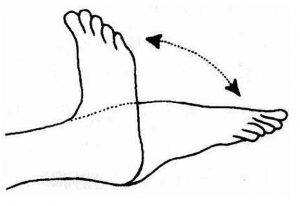
There are three stages to this exercise, which will strengthen every part of the foot and toes. To carry out this task: with your feet flat on the ground, sit up straight in a chair.
Lift your heels off the body while keeping your toes and fingers on the floor. When the soles of your feet are still on the ground, stop. After five seconds, hold this posture and then drop your heels. Toes should be pointed, heels should be raised, and only the tips of the big and second toes should touch the floor during the second stage.
Hold down for five seconds, then release. To get just the tips of your toes touching the floor during the third stage, raise your heels and curl them inward. Take up this role for 5 sec.
Big toe stretch
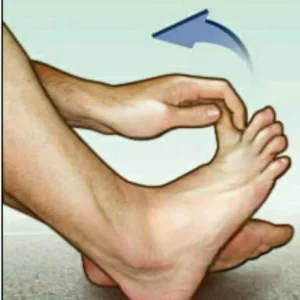
It’s crucial to maintain the big toe’s full range of motion. The next exercise, which also consists of three stages, is meant to stretch and ease toe pain caused by wearing tight shoes.
To carry out this task: With your feet flat on the ground, sit up straight in a chair. Place the left foot atop the right leg. Gently stretch the big toe up, down, and sideways with your fingers. For five seconds, maintain the big toe in each position. Before moving on to the other foot, repeat this ten times.
Toe splay
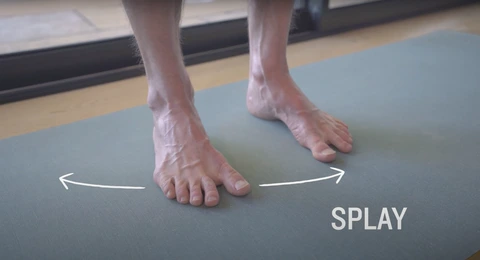
The toe muscles can be controlled better by performing the toe splay exercise. Depending on which foot feels more comfortable, people can perform it simultaneously on both feet or alternately.
To carry out this task: With your feet softly resting on the floor, take a seat in a straight-backed chair. As far as you can without straining, spread your toes. Keep your posture for five seconds. Do this ten times over. After gaining more strength, one can attempt wrapping a rubber band around their toes. This will give resistance, increasing the difficulty of the exercise.
Toe curls
Strengthening the flexor muscles in your feet and toes through toe curls enhances your overall strength. To carry out this task: With your feet flat on the ground, sit up straight in a chair. Place a small towel with its short side facing the feet on the ground in front of the body.
Position one foot’s toes on the towel’s short side. Attempt to pull the towel towards oneself by grabbing it between the toes. Consider using an object to weigh down the towel’s other end to increase the difficulty of this exercise.
Marble pickup
You can strengthen the muscles on the undersides of your feet and toes by performing the marble pickup exercise.
To carry out this task:
With your feet flat on the ground, sit up straight in a chair. In front of the feet, place a bowl of twenty marbles and an empty bowl on the ground. Pick up each marble with just one foot’s toes and drop it into the empty bowl. Apply the other foot to this exercise once more.
Sand walking
Stretching and strengthening the calves and feet can be achieved by walking barefoot on sandy surfaces. Walking in the sand is more physically taxing due to its soft texture, which makes it an excellent exercise in general.
To carry out this task:
Go somewhere with sand—a beach, a desert, a volleyball court, anywhere. Take off your socks and shoes. Take as long as you can to walk. To prevent overstretching your calves and feet muscles, try gradually increasing the distance.
Toe extension
Plantar fasciitis is a condition that can be prevented or treated with toe extension therapy. It is characterized by heel pain and difficulty raising the toes.
To carry out this task:
With your feet flat on the ground, sit up straight in a chair. Bring your toes up to your ankle. The heel cord and the bottom of the foot should feel stretched out. For ten seconds, hold. Give the arch a massage For ten seconds, hold. Stretching while massaging the arch of the foot can help reduce pain and tension. On each foot, perform this exercise ten times.
Golf ball roll
Plantar fasciitis pain and arch discomfort can both be lessened by rolling a golf ball beneath the foot.
To carry out this task: with your feet flat on the ground, sit up straight in a chair. put a small, hard ball, like a golf ball, on the ground beside the feet. Place one foot on the ball and roll it around while applying as much pressure as feels comfortable. The bottom of the foot should be massaged by the ball. After two minutes, switch to the other foot and repeat. A water bottle that is frozen can be another option.
How to Prevent Leg Pain?
By doing the following, you can lessen your risk of developing medical conditions that could damage your legs’ nerves:
Spend thirty minutes a day, five days a week, working out. Sustain a healthy weight. Steer clear of smoking. Keep an eye on your blood pressure and cholesterol levels and take action to control them. Put a daily limit of one drink for women and two for men on the amount of alcohol you consume. Consult your physician about
Prognosis
The prognosis for leg pain is good, and there are various ways to manage it. Chronic leg pain, however, should not be disregarded as it may be a sign of a more serious illness that needs to be treated. By treating the underlying cause, people with chronic leg pain caused by medical conditions typically experience relief.
Complications of Leg Pain
Leg pain complications are not common. If they do occur, it will be because the leg pain’s underlying cause—such as sciatica, deep vein thrombosis, or peripheral arterial disease—was not promptly diagnosed and treated. Serious repercussions may result from this, though the specific complications will vary. The pain in the legs may worsen as these conditions worsen.
Summary
Leg pain can have a variety of causes. Injuries, illnesses, and cramps are common causes. Leg pain is frequently not a serious concern. On the other hand, it might indicate a dangerous illness like DVT.
For this reason, it’s a good idea to discuss any new or unexplained leg pain with your physician. Get in touch with your doctor as soon as possible if you experience pain along with swelling, discoloration, or a shift in skin temperature.
FAQs
Leg pain is a prevalent issue. It may be the result of an injury, cramp, or another factor. Venous insufficiency leading to painful, twisted, and enlarged superficial veins is known as varicose veins.
Take breaks from the things that hurt and make you sore. Ice: To relieve pain and swelling in the affected area, apply an ice pack to your legs.
If it isn’t caused by an injury, it’s an early indication of disuse syndrome.
In addition to hurting your butt, an overly firm chair may force you to shift your weight from your feet to your thighs. This may result in low circulation in the leg.
References
- Leg pain. (2023, April 25). Mayo Clinic. https://www.mayoclinic.org/symptoms/leg-pain/basics/when-to-see-doctor/sym-20050784
- Could your leg pain be varicose veins? (2023, August 23). Mayo Clinic Health System. https://www.mayoclinichealthsystem.org/hometown-health/speaking-of-health/could-your-leg-pain-be-varicose-veins
- O’Connell, K. (2019, March 8). What causes leg pain and how to treat it? Healthline. https://www.healthline.com/health/leg-pain#when-to-seek-help
- Why do my legs hurt? (n.d.). WebMD. https://www.webmd.com/pain-management/ss/slideshow-leg-pain-causes
- M, N. K. (2020, March 6). Leg Pain: symptoms, causes, treatment, medicine, prevention, diagnosis. myUpchar. https://www.google.com/amp/s/www.myupchar.com/en/disease/leg-pain.amp
- Cooper, G., MD. (n.d.). Leg pain and numbness: What might these symptoms mean? Spine-health. https://www.spine-health.com/conditions/leg-pain/leg-pain-and-numbness-what-might-these-symptoms-mean
- Tegna, W. (2019, February 26). 9 Stretches and Exercises for leg Pain Relief | Spine Works Institute. Spine Works Institute. https://www.dfwback.com/9-stretches-and-exercises-for-leg-pain-relief/
- 11 Exercises to Reduce Knee Pain | Fort Worth Bone & Joint Clinic. (n.d.). https://thcboneandjoint.com/educational-resources/knee-exercises.html
- Admin. (2019, April 3). At Home Workouts To Relieve Leg Pain – The Vascular Institute of Birmingham. The Vascular Institute of Birmingham. https://new-legs.com/at-home-workouts-to-relieve-leg-pain/
- Cadman, B. (2023, October 9). What are the best foot exercises for healthy feet? https://www.medicalnewstoday.com/articles/320964

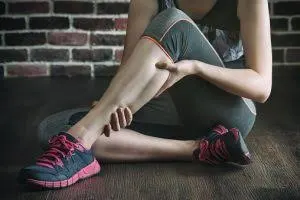
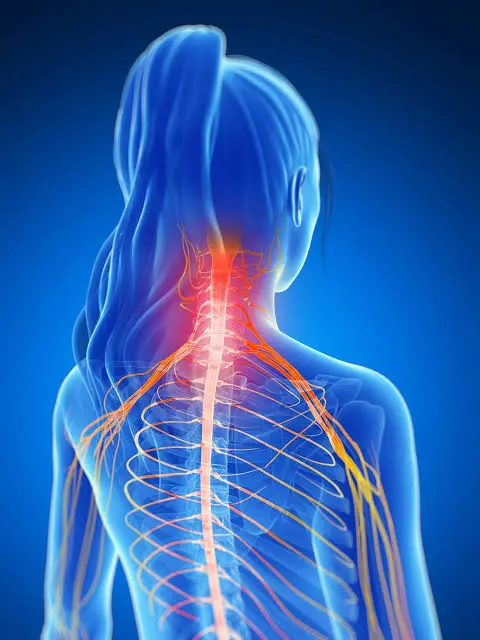
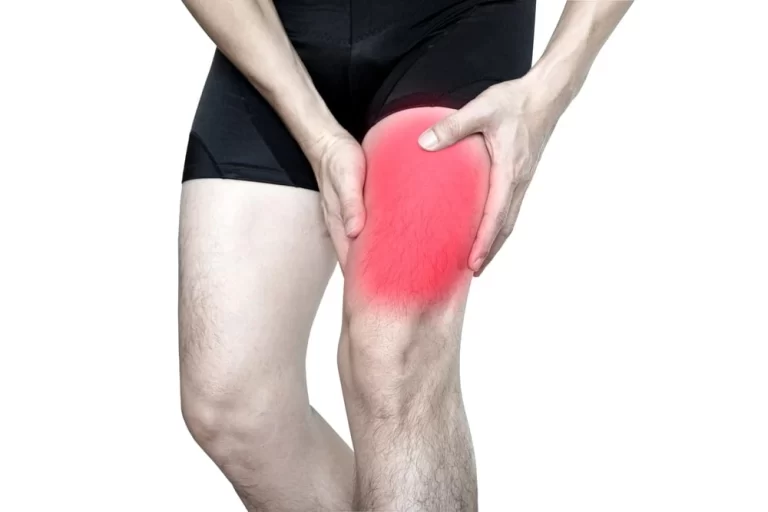
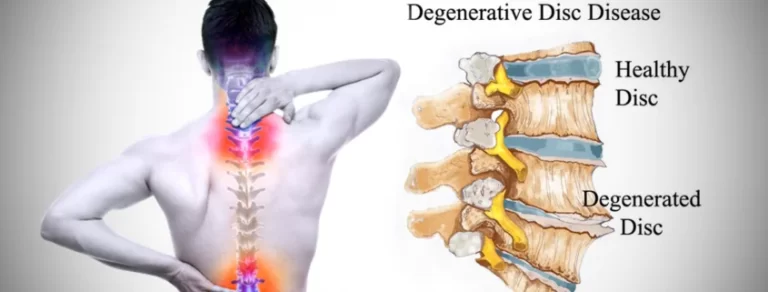
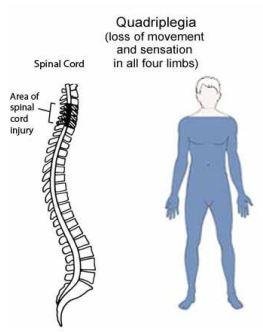
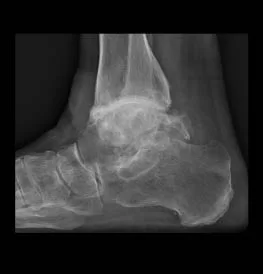

6 Comments